Why not try Kinoko Jiru, a Japanese mushroom soup rich in umami? This comforting dish features a variety of mushrooms simmered in dashi broth, offering complex flavors and textures.
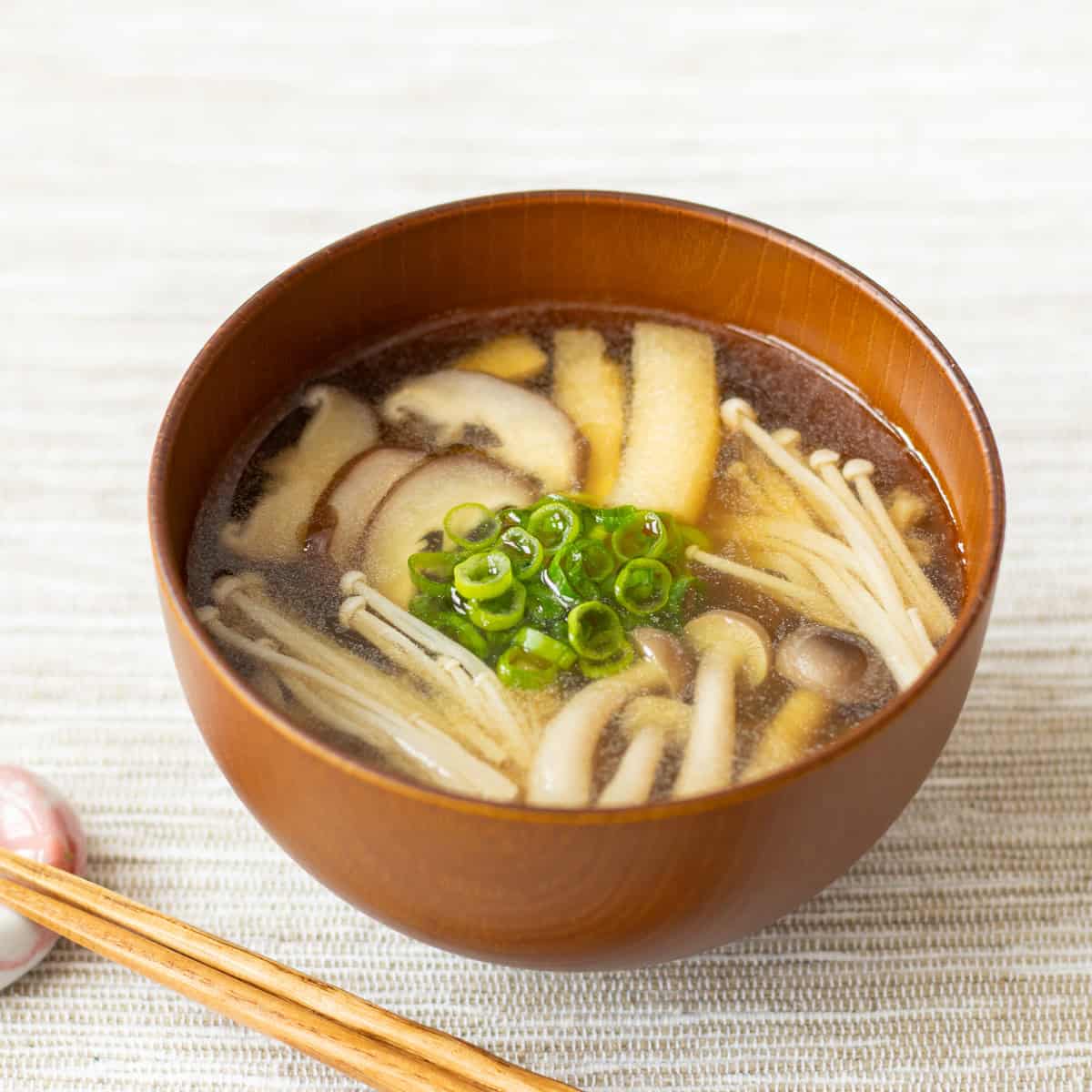
Jump to:
What is Kinoko Jiru?
Kinoko Jiru is a Japanese mushroom soup made with a variety of mushrooms simmered in dashi broth. "Kinoko" means mushrooms, and "Jiru" refers to soup. Using different types of mushrooms allows the flavors to meld together, creating a flavorful and umami-packed dish.
Traditionally, this soup was enjoyed in fall when mushrooms are in season in Japan. However, now that mushrooms are available year-round, it has become a common choice for everyday meals. You can use any type of mushroom you like. Enjoy the complex flavors, textures, and nutritional benefits of mushrooms by using your favorite varieties.
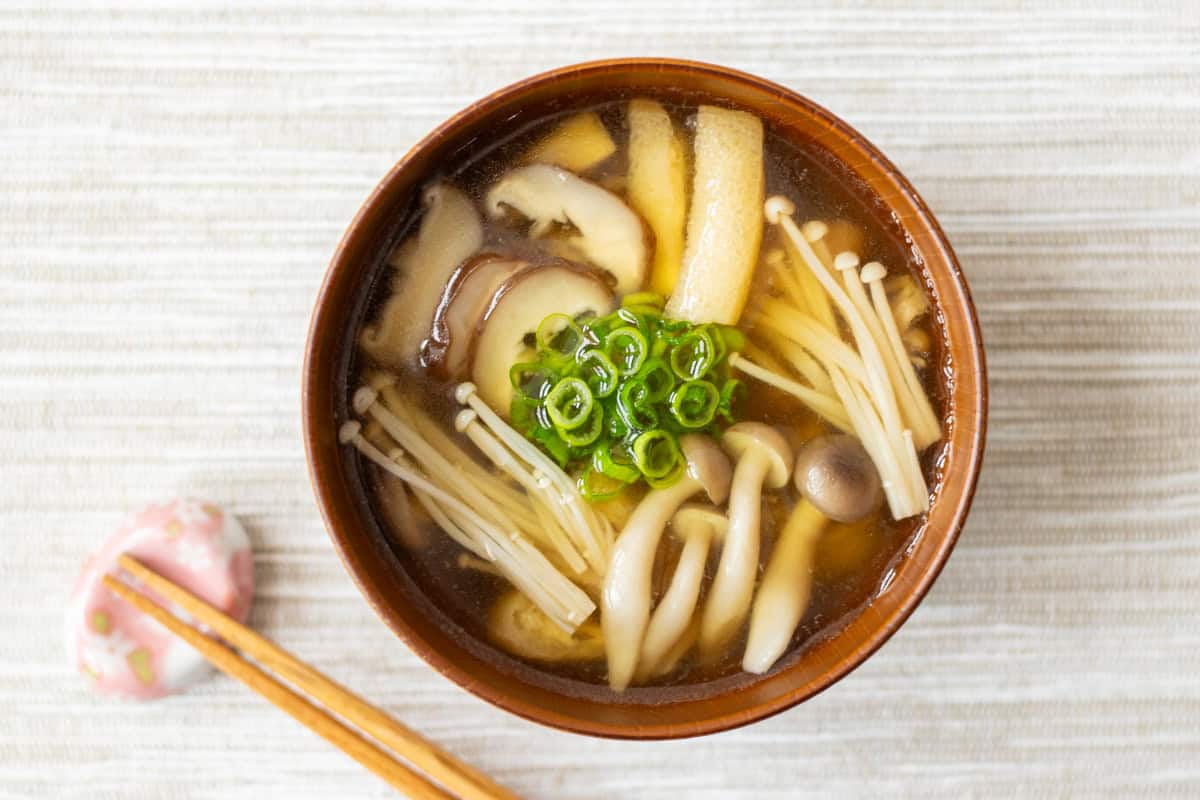
Mushroom varieties used
There are no specific rules about which mushrooms to use in kinoko jiru. The more varieties you add, the richer and more flavorful the soup will be. Typically, some of the following types of mushrooms are used in this dish:
- Shiitake
- Enoki
- Shimeji
- Maitake
- Nameko
While you can make this dish with just one type of mushroom, combining different varieties allows you to enjoy a more complex character. The mushrooms don’t necessarily have to be Japanese varieties—you can use any kind available in your area.
Optional ingredients
This mushroom soup can also be enjoyed with a variety of additional ingredients.
Common additions include vegetables like naganegi (Japanese leeks), carrots, and daikon radish, as well as aburaage (fried tofu pouches) and chicken. In this recipe, I used aburaage to add richness to the flavor.
However, since mushrooms are the star of the dish, it is best not to add too many extra ingredients. These additions are optional—this dish can also be made with just mushrooms. Feel free to add whatever you like.
Choosing the right dashi
Kinoko jiru is a soup that combines the umami of dashi broth and mushrooms to create a rich, delicious flavor. There are various types of dashi, and you can use any of them, but for this soup, I highly recommend using bonito dashi. Since this dish doesn't contain meat or other animal proteins, using bonito dashi—which is made from fish—adds an extra layer of depth to the flavor.
That said, this is just a suggestion to enhance the dish. No matter which type of dashi you choose, you can still make a delicious kinoko jiru. If you follow a plant-based diet or prefer to avoid animal-based dashi, try using a different type, such as kombu dashi.
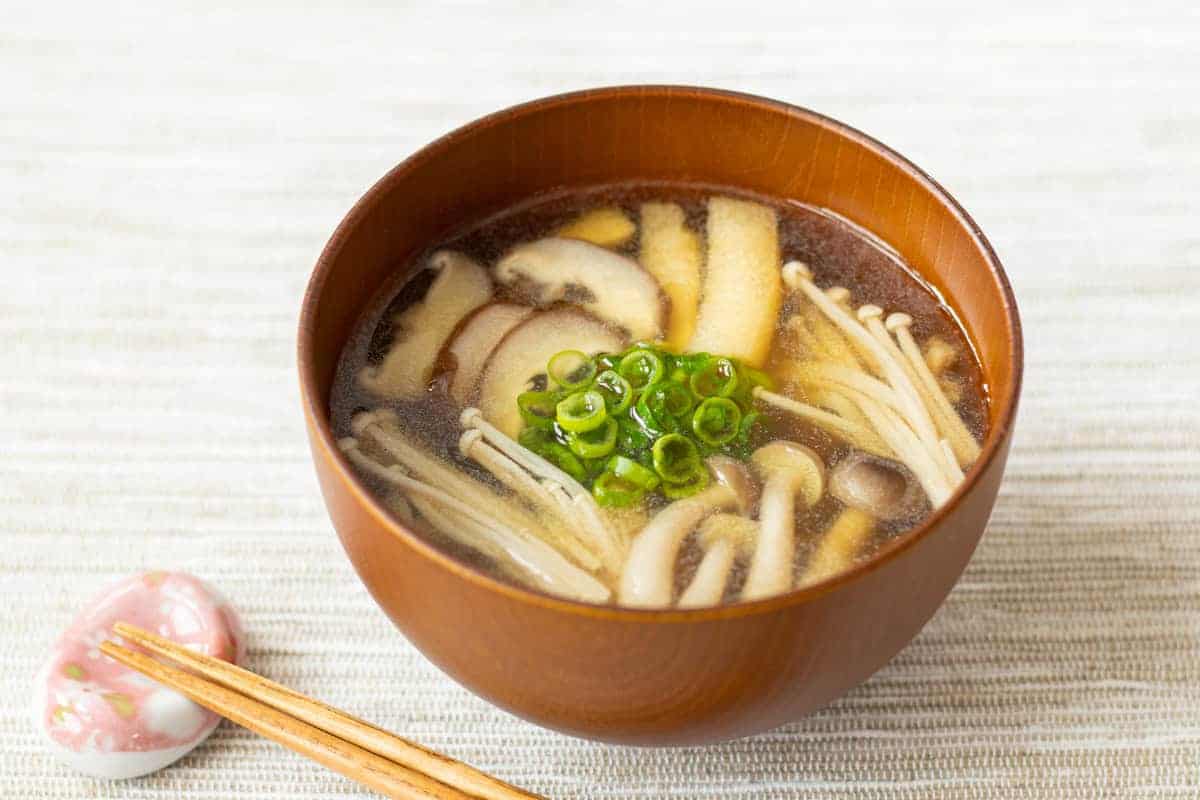
📋Step-by-step recipe
Ingredients
- 1.4 oz shiitake mushrooms
- 1.4 oz enoki mushrooms
- 1.4 oz shimeji mushrooms
- 0.7 oz aburaage (fried tofu pouches)
- 1 green onion / scallion
Bonito dashi:
- 2 cup water
- ½ cup bonito flakes (katsuobushi)
Seasonings:
- 1 Tbsp sake
- ¼ tsp salt
- 2 tsp soy sauce
You can also use different types of mushrooms, or increase or decrease the number of varieties you use.
Instructions
🕒 Total: 15 minsIf you already have bonito dashi or another type of dashi, start from step 3. In that case, use 1 ⅔ cups (400 ml) of your dashi for 2 servings.
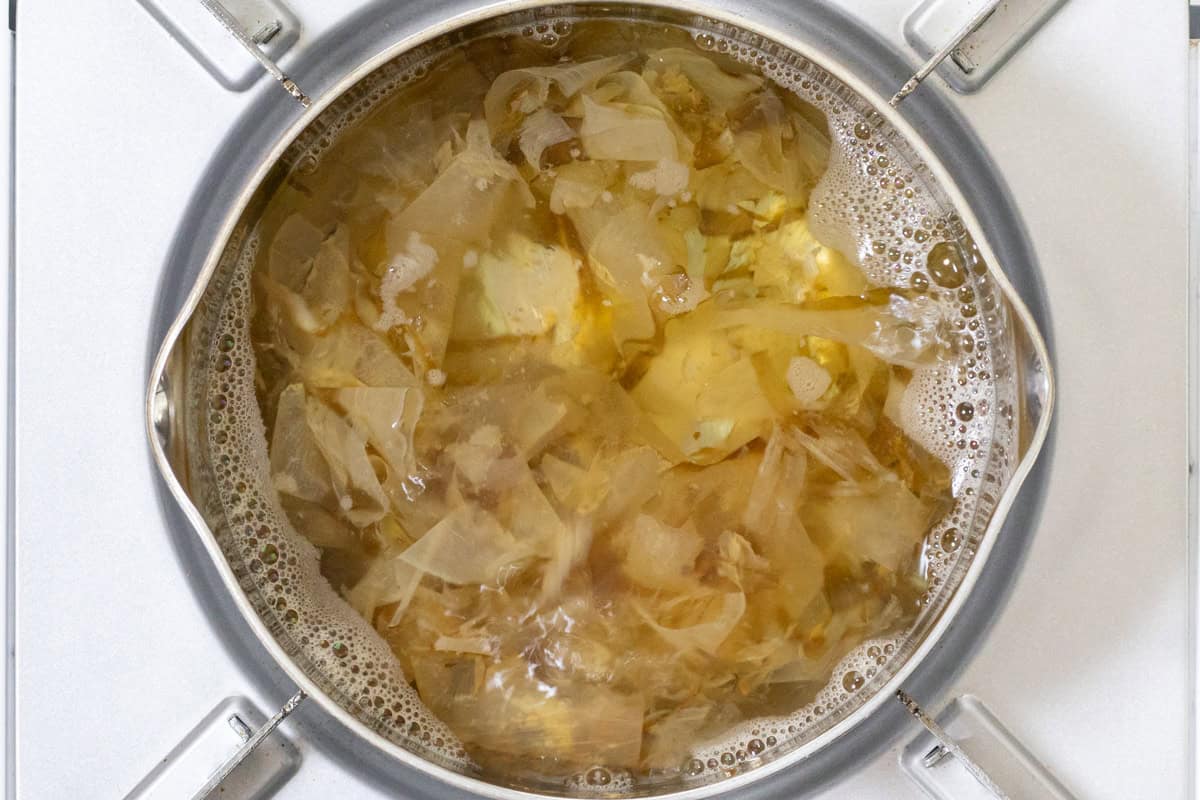
Step 1
Fill a pot with water and bring it to a boil. Once boiling, reduce the heat to low, add bonito flakes, and let it simmer for 3 minutes.
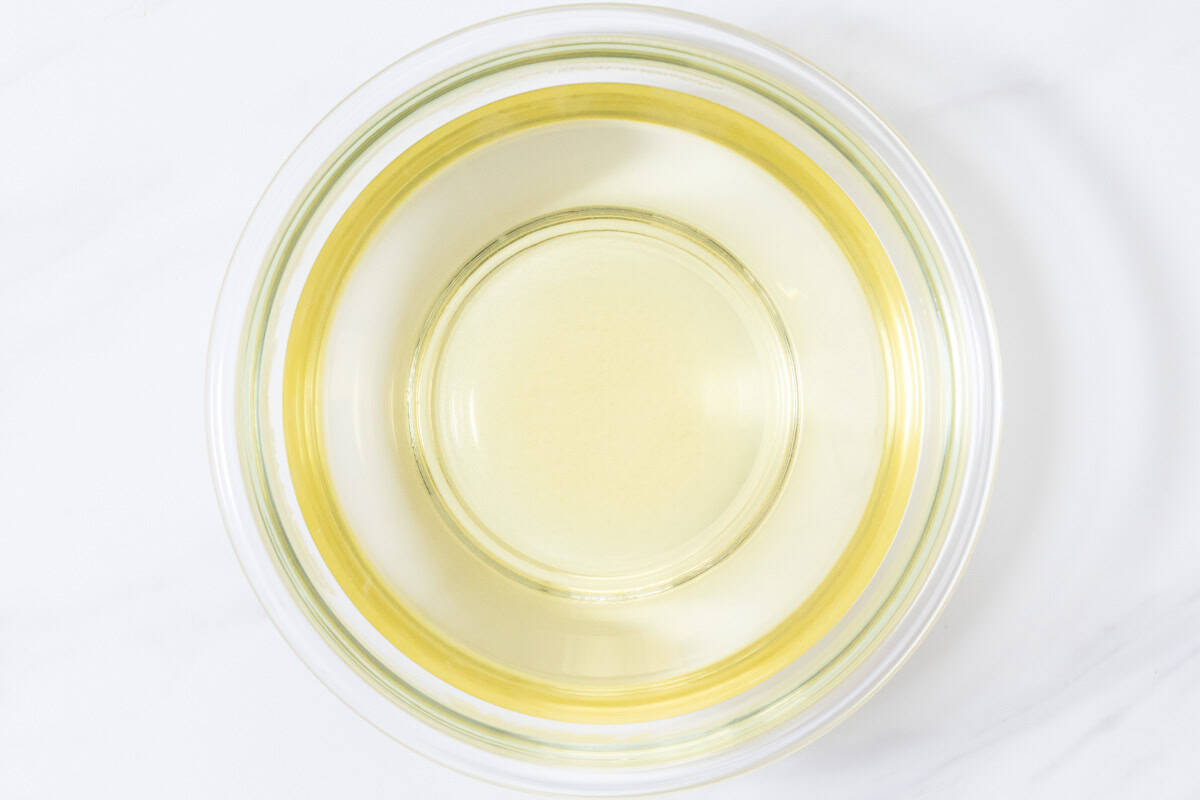
Step 2
Turn off the heat and strain the mixture through a sieve lined with paper towels or a cloth (such as cheesecloth). Alternatively, if you don't mind a few fine bonito flakes remaining, you can simply use a fine-mesh strainer. Bonito dashi is now ready.
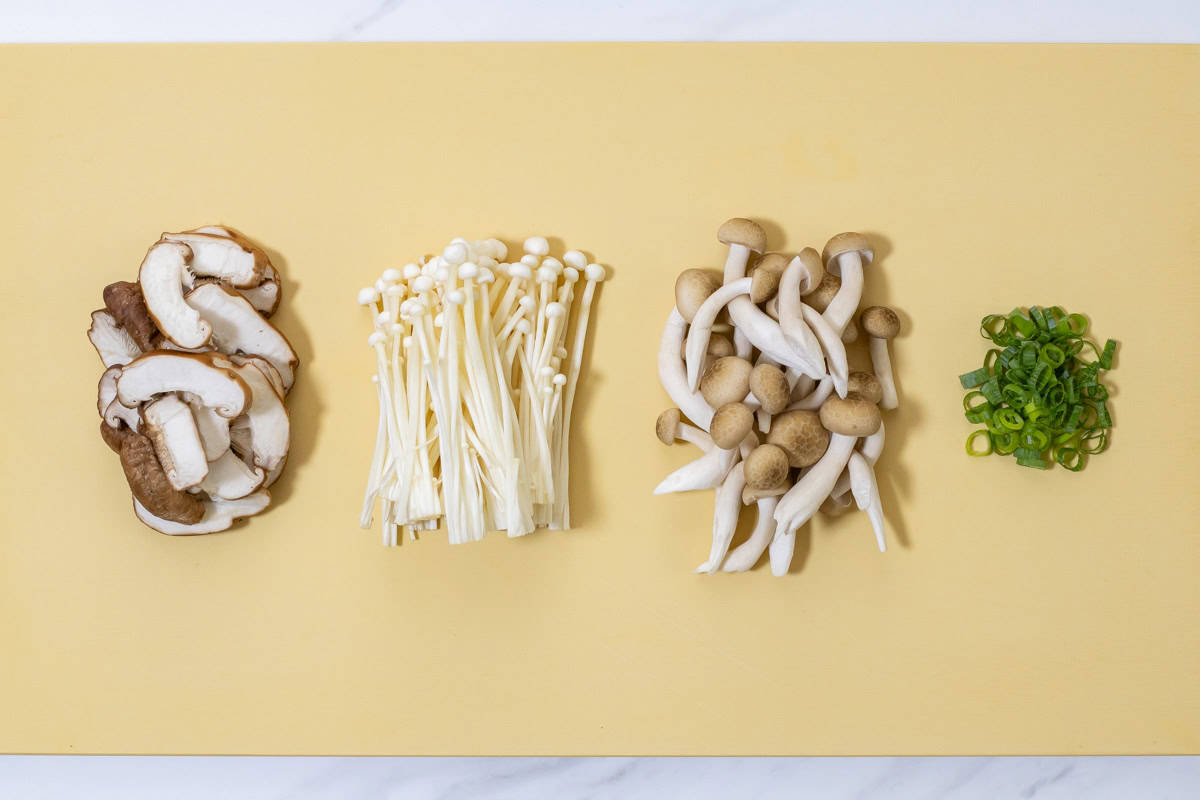
Step 3
Remove the stems from the shiitake mushrooms and thinly slice the caps. Trim off the base of the enoki and shimeji mushrooms, and separate them into smaller stalks or individual pieces. Thinly slice the green onion.
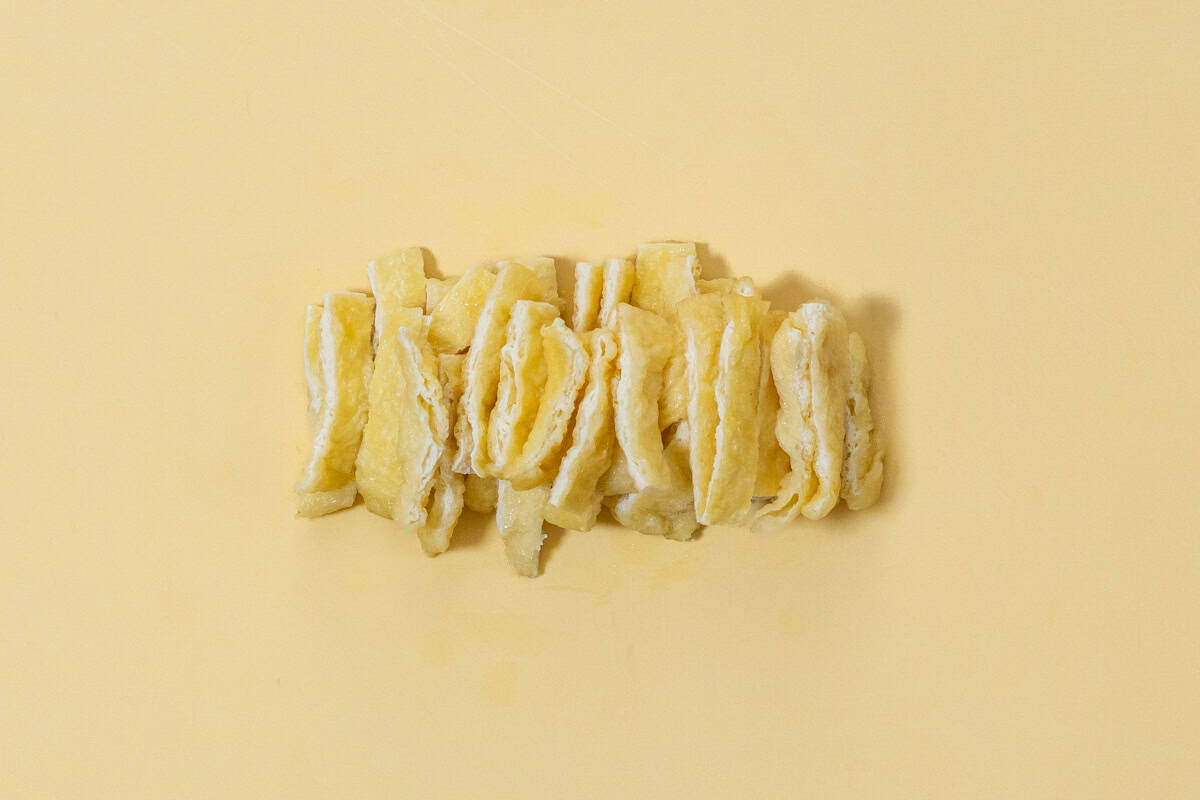
Step 4
Place the aburaage in a heatproof bowl and pour boiling water over it to remove any excess oil. Remove it from the bowl, and once it has cooled enough to handle, gently squeeze out any remaining moisture. Cut it in half lengthwise, then slice it into thin strips.
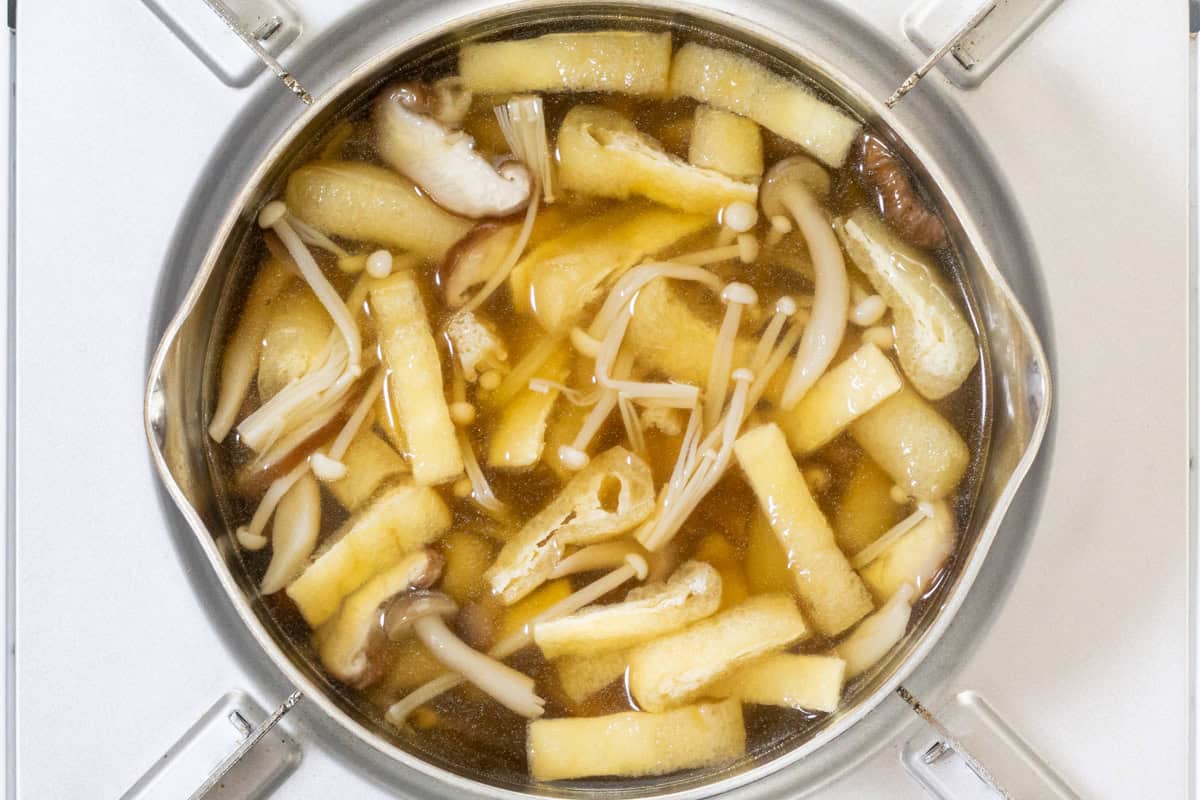
Step 5
Return the dashi to the pot and bring it to a boil. Once boiling, add all the mushrooms, the aburaage, and sake, and simmer them over low heat for 3 minutes. Then, turn off the heat, add salt and soy sauce, and let the flavors blend.
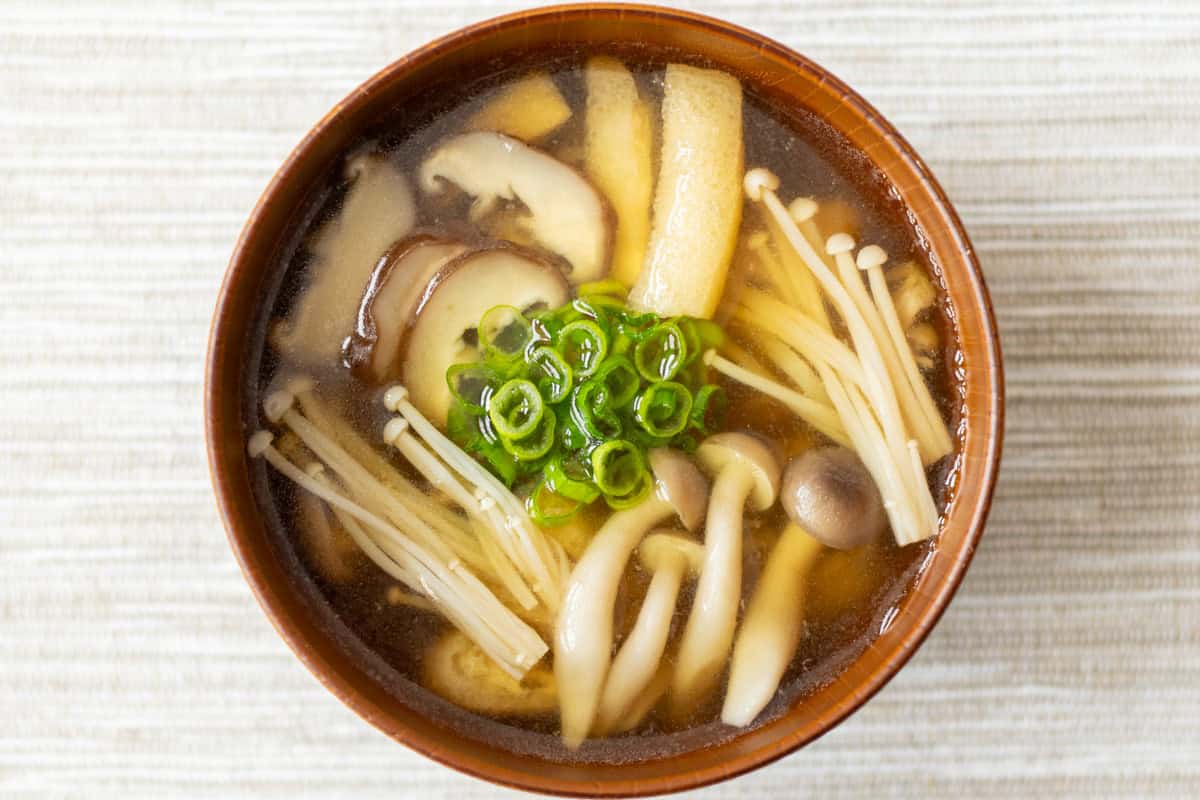
Step 6
Serve in individual bowls and top with the green onions.
To store
You can store it in the refrigerator for up to 2 days.
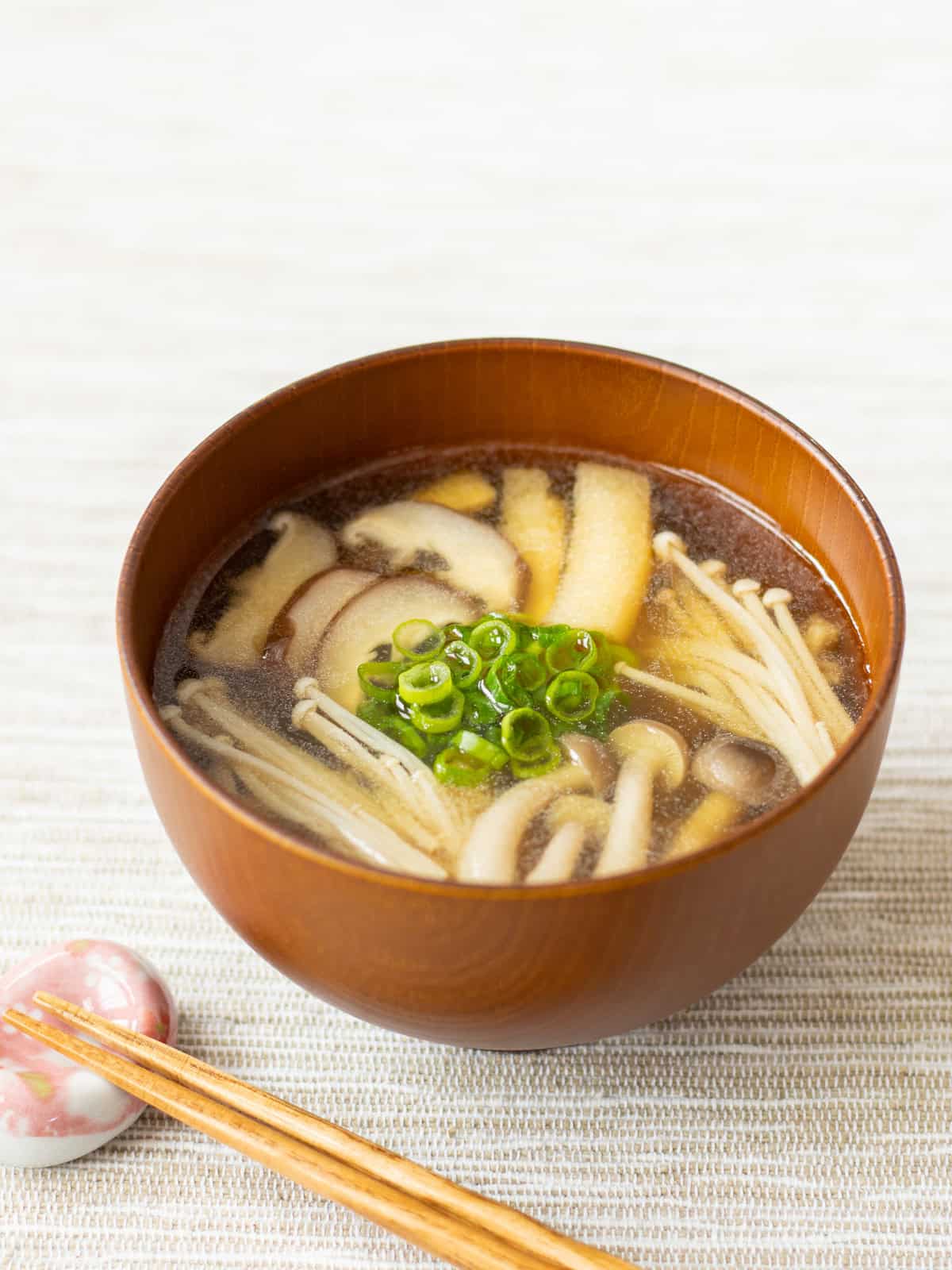
If you try this recipe, I’d love to hear what you think. Please consider leaving a review and star rating in the comments below. If you enjoyed it, I’d really appreciate it if you shared it with your friends.
More mushroom recipes you'll love
Recipe card

Kinoko Jiru (Japanese Mushroom Soup)
Ingredients
- 1.4 oz shiitake mushrooms
- 1.4 oz enoki mushrooms
- 1.4 oz shimeji mushrooms
- 0.7 oz aburaage (fried tofu pouches)
- 1 green onion / scallion
Bonito dashi:
- 2 cup water
- ½ cup bonito flakes (katsuobushi)
Seasonings:
- 1 Tbsp sake
- ¼ tsp salt
- 2 tsp soy sauce
Instructions
- Fill a pot with water and bring it to a boil. Once boiling, reduce the heat to low, add bonito flakes, and let it simmer for 3 minutes.
- Turn off the heat and strain the mixture through a sieve lined with paper towels or a cloth (such as cheesecloth). Alternatively, if you don't mind a few fine bonito flakes remaining, you can simply use a fine-mesh strainer. Bonito dashi is now ready.
- Remove the stems from the shiitake mushrooms and thinly slice the caps. Trim off the base of the enoki and shimeji mushrooms, and separate them into smaller stalks or individual pieces. Thinly slice the green onion.
- Place the aburaage in a heatproof bowl and pour boiling water over it to remove any excess oil. Remove it from the bowl, and once it has cooled enough to handle, gently squeeze out any remaining moisture. Cut it in half lengthwise, then slice it into thin strips.
- Return the dashi to the pot and bring it to a boil. Once boiling, add all the mushrooms, aburaage, and sake, and let them simmer over low heat for 3 minutes. Then, turn off the heat, add salt and soy sauce, and let the flavors blend.
- Serve in individual bowls and top with the green onions.
Notes
- You can also use different types of mushrooms, or increase or decrease the number of varieties you use.
- If you already have bonito dashi or another type of dashi, start from step 3. In that case, use 1 ⅔ cups (400 ml) of your dashi for 2 servings.
- You can store it in the refrigerator for up to 2 days.

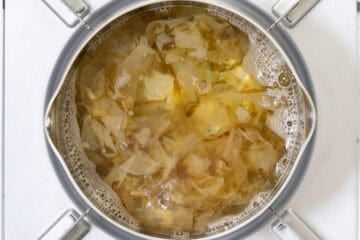
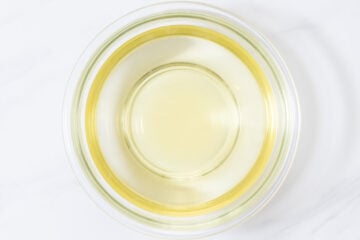
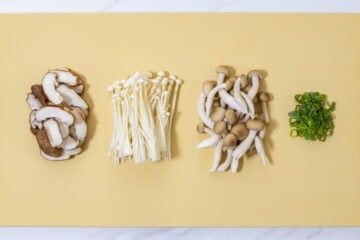
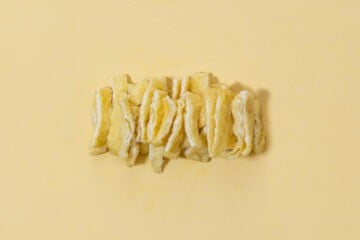
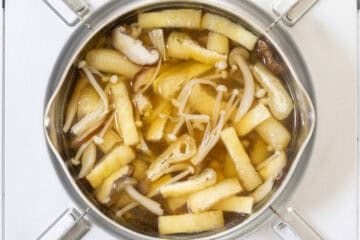
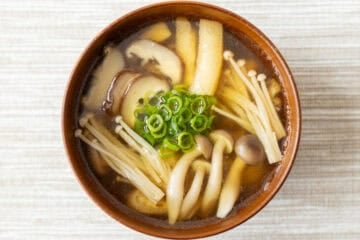
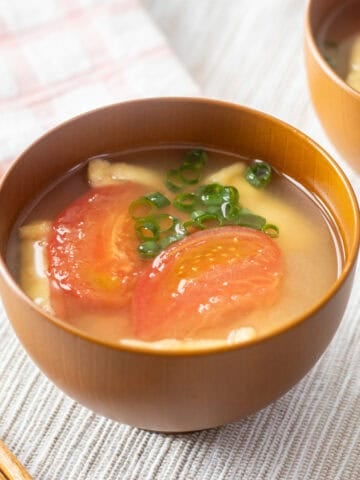
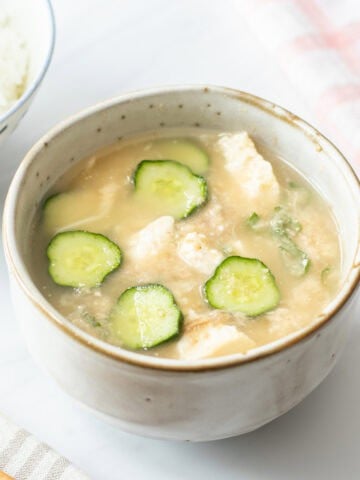


Leave a Rating and a Comment